Source: The Conversation (Au and NZ) – By William Terry, PhD Researcher, Southern Cross University
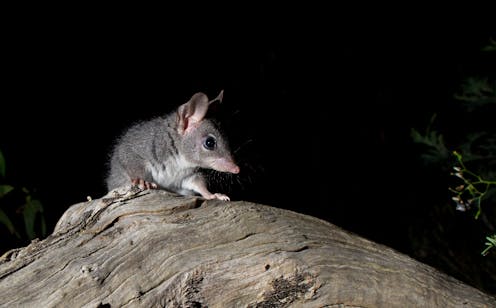
William Terry, Author provided
Environmental scientists see flora, fauna and phenomena the rest of us rarely do. In this series, we’ve invited them to share their unique photos from the field.
As a result of logging and severe bushfires, Australian wildlife is facing a severe shortage of tree hollows — holes in the trunks and branches of large old trees. More than 300 species of birds and mammals, including possums, bats, cockatoos, owls and kookaburras, rely on tree hollows for shelter or breeding.
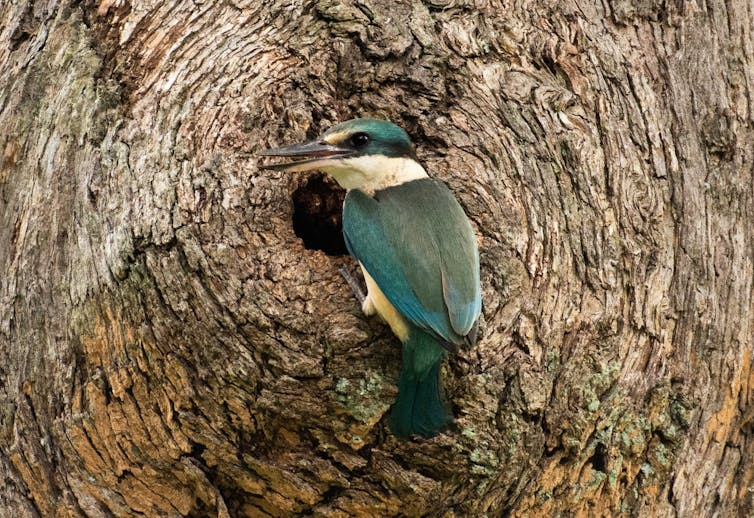
William Terry
In Australia, hollows are usually formed through the decay of a tree scar, and it can take hundreds of years for tree hollows big enough for medium-sized animals to form naturally.
This includes phascogales — the rat-sized, carnivorous marsupials that live in open woodlands across Australia and are the focus of my research and photography. But like many of Australia’s forest-dwelling mammals, phascogales are vulnerable to extinction.
So with hollows becoming harder to find, I venture into forests and study how well artificial hollows, made with chainsaws, can replace them. And, incredibly, it’s working: my research shows phascogales and other native animals are enthusiastically moving into the new real estate.
Meet the mysterious brush-tailed phascogale
Phascogales are an important species to Australia but, unfortunately, their cryptic behaviour and nocturnal habits mean people rarely see them.
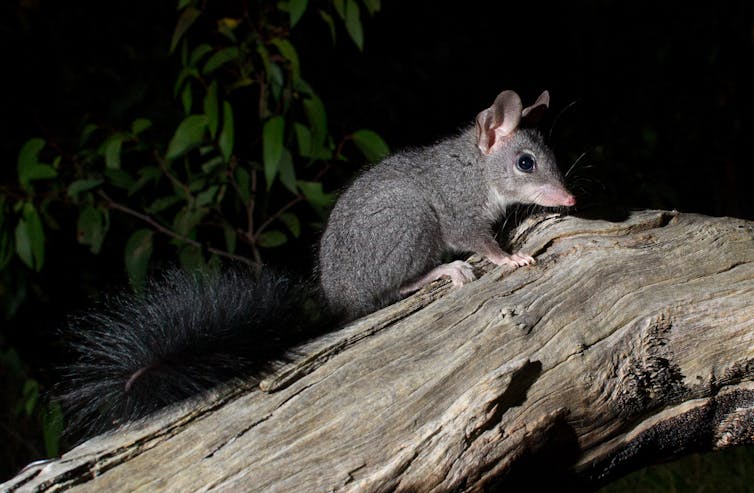
William Terry
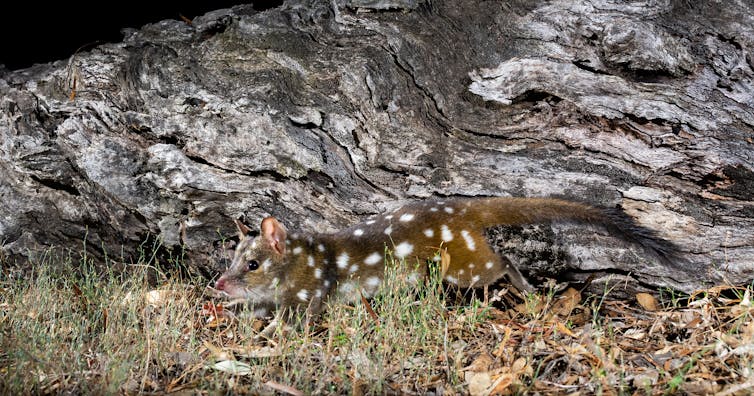
William Terry, Author provided
Phascogales feed on insects after stripping bark from eucalypts. But through my close interactions and radio tracking, I’ve documented phascogales eating other more unusual foods, including bird eggs and sometimes even small birds, such as grey-shrike thrush.
I’ve also recorded them taking dead birds, such as the rosella pictured below. They even have a reputation among farmers as being a fierce chicken killer, but this may be exaggerated.
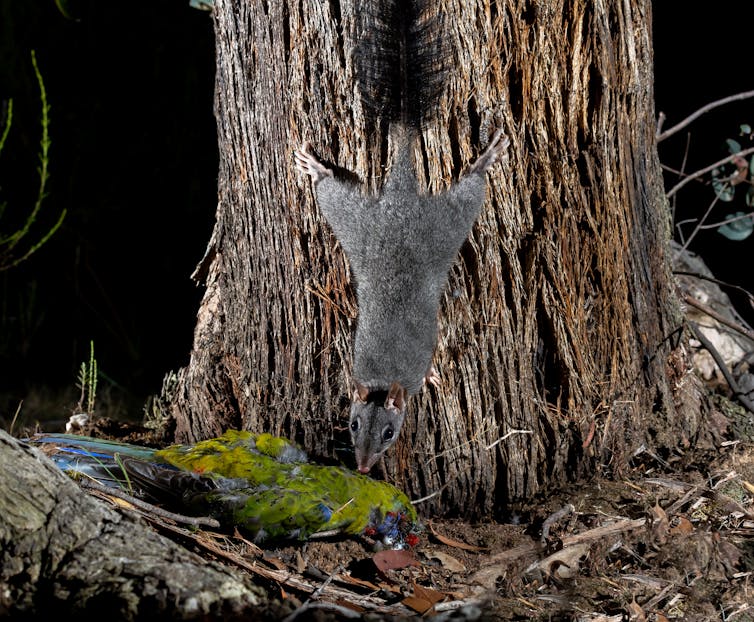
William Terry
Phascogales have an unusual life. Shortly after mating between April and May, all males die at about 11 months of age from stomach ulcers. This frees up resources for the next generation of young joeys that will emerge from the nest in early summer.
But will they survive in the future?
Tragically, at least one species, the brush-tailed phascogale, is threatened with extinction, primarily due to habitat loss, climate change, and feral predators such as foxes and cats.
The brush-tailed phascogale (Phascogale tapoatafa tapoatafa) occurs across the eastern side of Australia, from southern Queensland to Victoria. It’s now extinct in South Australia.
Likewise, the much smaller red-tailed phascogale (Phascogale calura) once survived across a vast swathe of land from Western Australia to Victoria. Today, it survives only in small pockets in the Western Australia wheatbelt.
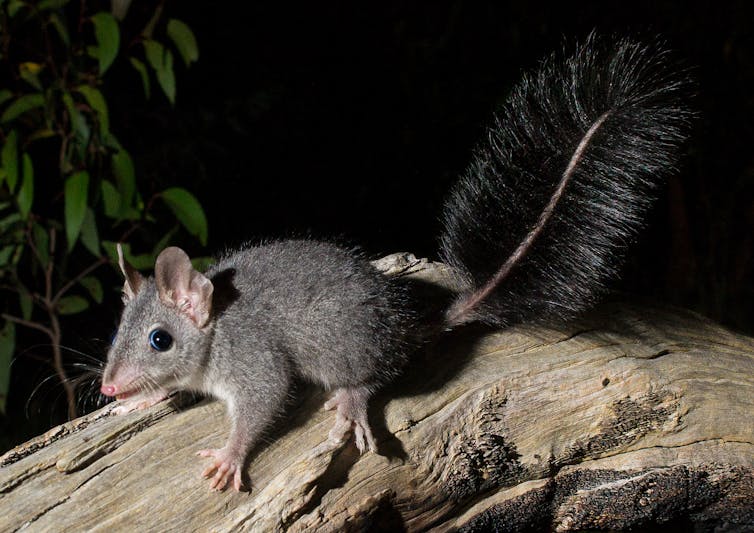
William Terry
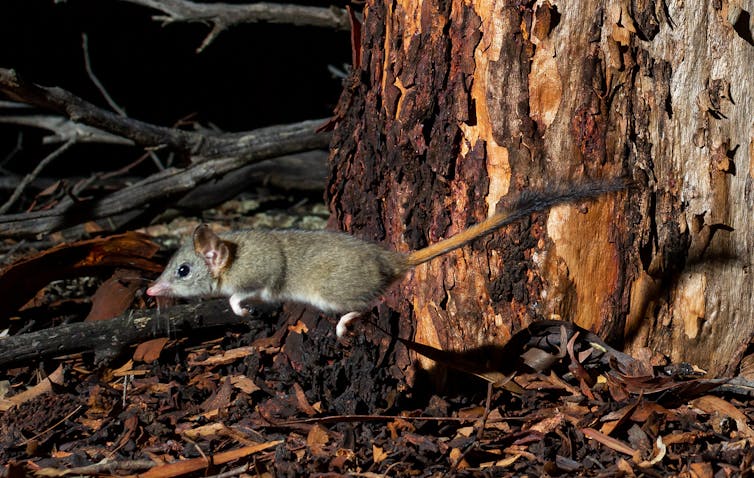
William Terry, Author provided
Household cats are a particularly major issue for phascogales, and many cat owners in central Victoria have a story about their cat bringing home a phascogale (so please keep your pet cat inside at all times).
Read more:
Don’t let them out: 15 ways to keep your indoor cat happy
Last year, research confirmed climate change would reduce the available areas phascogales could survive. This research found areas with a phascogale-friendly climate would decline by up to 79% in Queensland, 67% in Victoria and 17% in NSW, by 2070.
Climate change also threatens to bring longer, more frequent and severe heatwaves. For phascogales and many other mammals, this could be a death sentence.
Tree hollows with thick walls can protect the animals sheltering inside from the high temperatures outside.
But these are getting increasingly rarer, and this is where my research on chainsaw hollows comes in. Thick-walled hollows may be very important for the long-term survival of phascogales and other species in a warming climate.
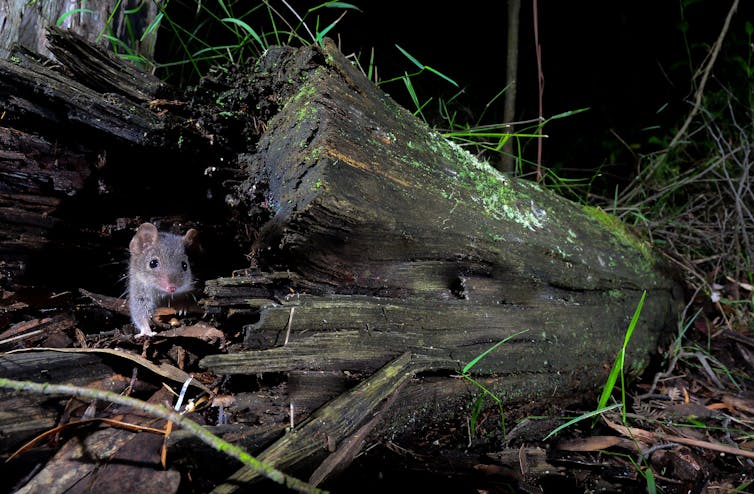
William Terry, Author provided
Carving them a home
A chainsaw hollow is a cavity constructed inside a tree. A faceplate is then attached over the top, with a hole drilled into it for the animal to enter. They offer refuge for Australia’s endangered mammals and birds.
For our project, we carved 45 chainsaw hollows in dry forests and woodland where phascogales are known to occur. We also installed similar-sized nest boxes — which are more commonly used to offset the loss of hollows — on nearby trees. We monitored these for two and a half years.
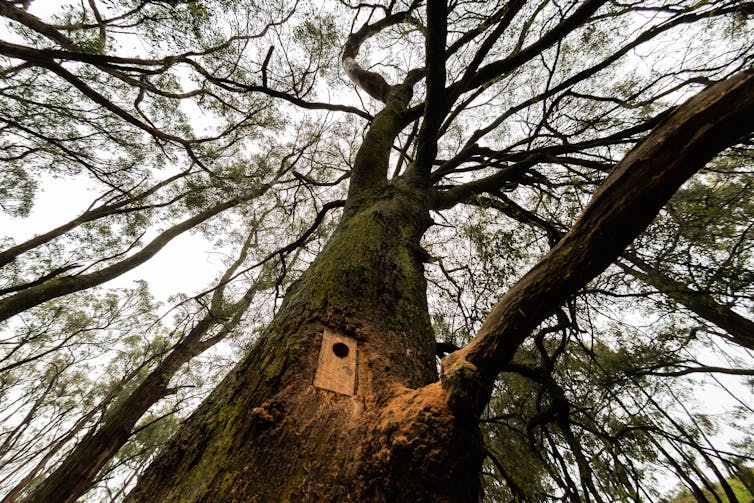
William Terry, Author provided
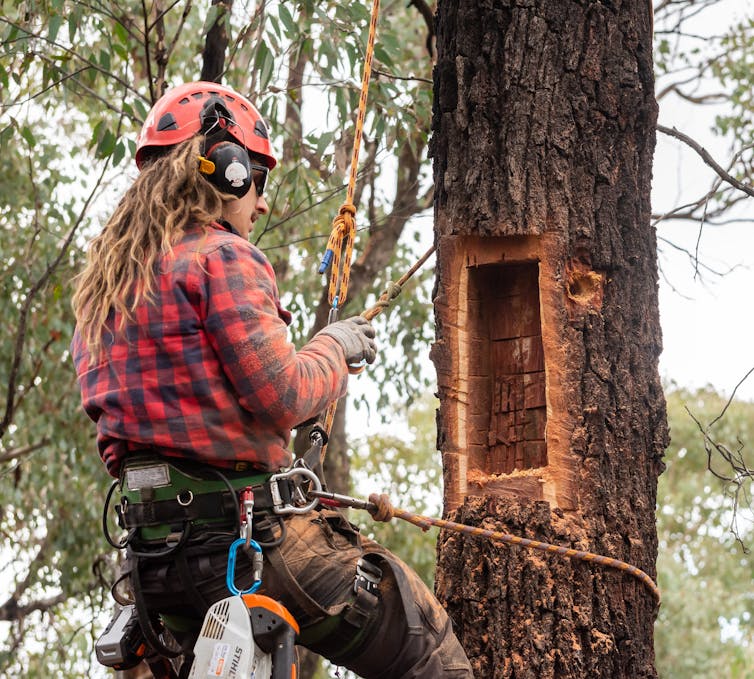
William Terry, Author provided
Research from 2018 shows nest boxes offer little protection from outside temperatures. I’ve collected data, which is not yet published, that confirms this.
My research shows chainsaw hollows provide 27% more protection from extreme temperatures during heatwaves compared to nest boxes, which provided almost no protection.
Read more:
The world endured 2 extra heatwave days per decade since 1950 – but the worst is yet to come
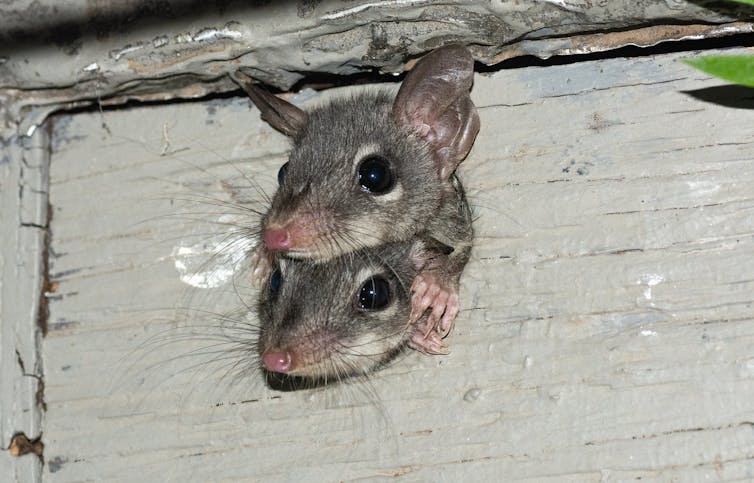
William Terry, Author provided
So it’s no wonder we observed and recorded phascogales and the more common sugar glider (Petaurus notatus) more frequently sheltering in chainsaw hollows than in nearby nest boxes.
Other animals used the chainsaw hollows, too. This includes the feather-tailed glider, yellow-footed antechinus, and the white-throated treecreeper.
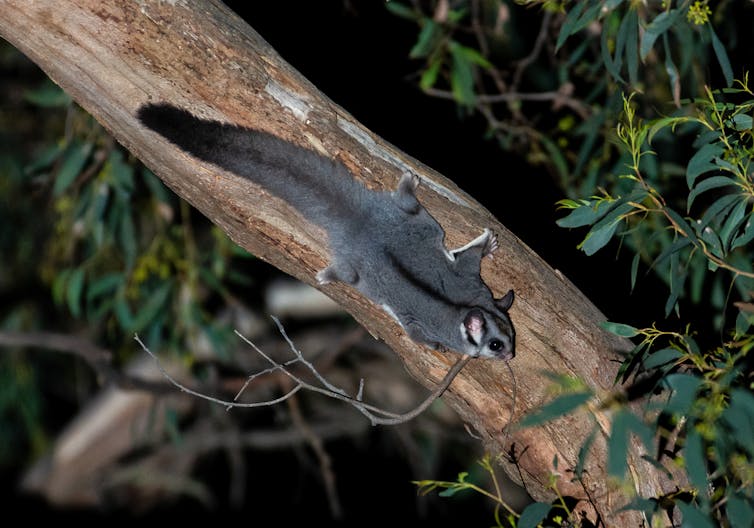
William Terry
But like nest boxes, the chainsaw hollows showed signs they would be only an interim measure, requiring maintenance with bark growing over entrance holes and issues with a buildup of moisture.
In any case, further research into this species is needed, as it will aid land managers to conserve this enigmatic species as more challenges are thrown their way into the future.
Read more:
Photos from the field: the stunning crystals revealing deep secrets about Australian volcanoes
![]()
William Terry does not work for, consult, own shares in or receive funding from any company or organisation that would benefit from this article, and has disclosed no relevant affiliations beyond their academic appointment.
– ref. DIY habitat: my photos show chainsaw-carved tree hollows make perfect new homes for this mysterious marsupial – https://theconversation.com/diy-habitat-my-photos-show-chainsaw-carved-tree-hollows-make-perfect-new-homes-for-this-mysterious-marsupial-159639








